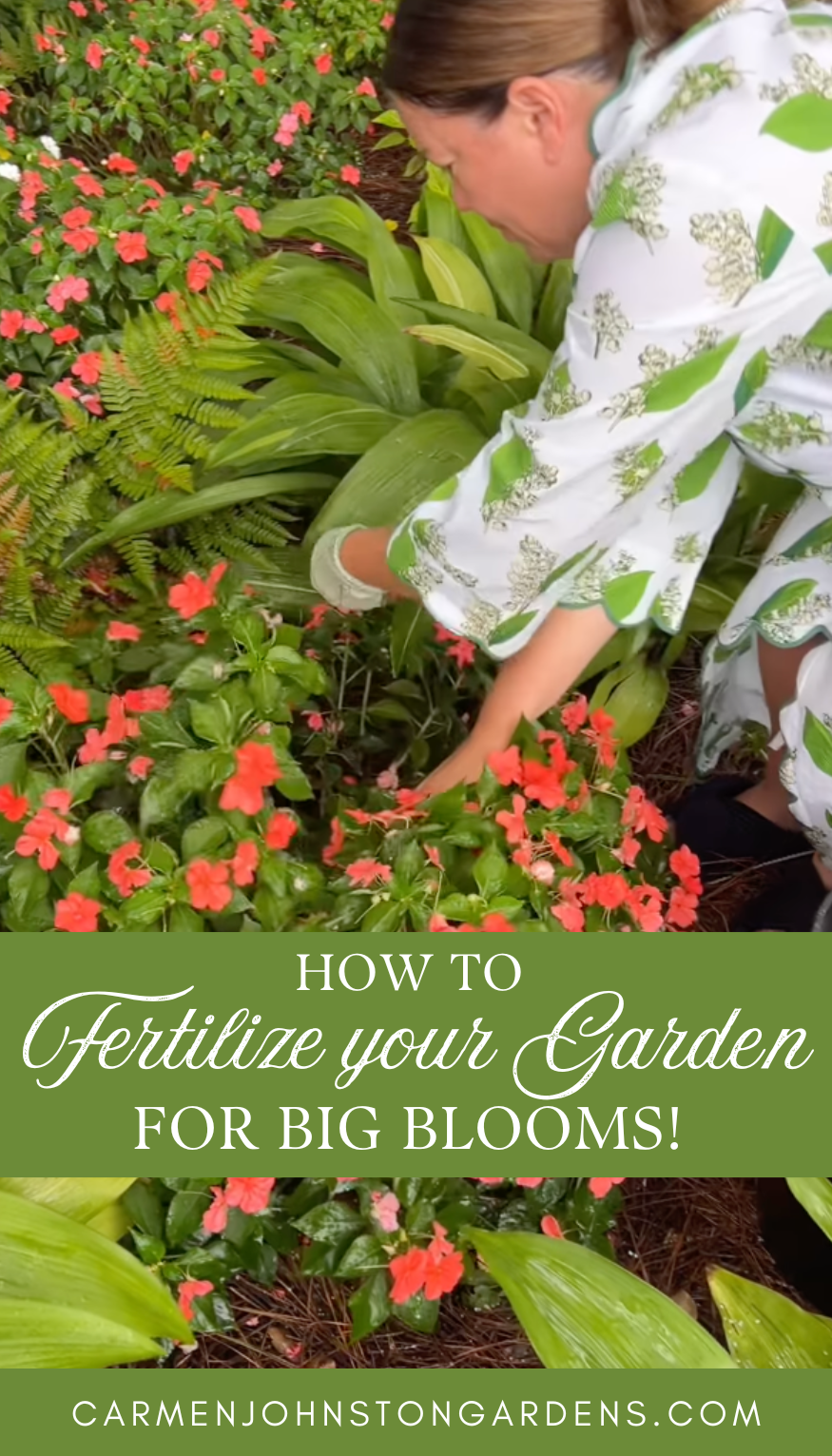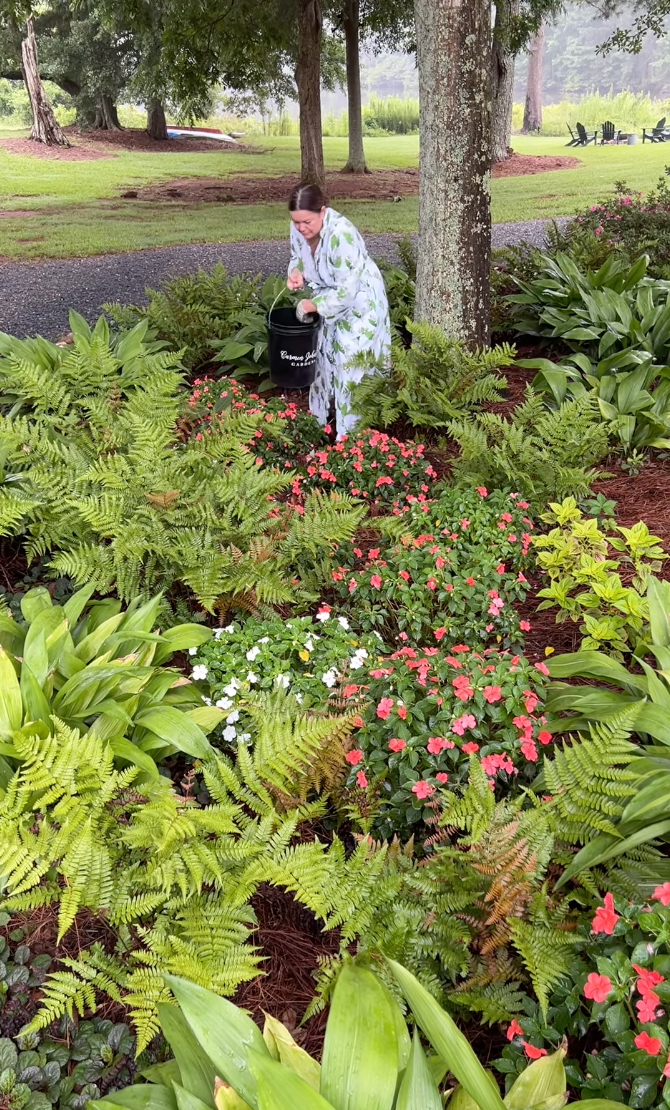How (and When) to Fertilize your Garden
Have y’all seen the weather forecast for next week? After weeks of brutal summer heat, many of us are finally starting to dip back down into some cooler weather. (Sorry to my friends in Texas and out west…this post may not apply to y’all!) But for much of the Southern and Eastern U.S., temperatures will be dropping into the low 80s and even the 70s, with lots of soaking rain in the forecast.
That means it is the perfect time to fertilize your plants for their end-of-summer hoorah!
People always ask me how I get such big, healthy blooms year after year, and the secret is actually pretty simple. Are you ready? Here it is…
Plenty of water and well-timed fertilizer. That’s it.
Let me show you exactly how I do it!
What’s the best time to fertilize a garden?
The best time to fertilize your garden is after a good rain or when the soil is moist. NEVER when it’s dry. But seasonally speaking, it’s best to fertilize plants in:
Early spring: Feed new growth as plants come out of dormancy.
Mid-summer: Give a second boost, especially to annuals and containers.
After rainstorms: Moisture helps fertilizer soak into the roots more effectively.
When to Apply Flower FErtilizer in the Summer?
Southern summers can bring on sweltering heat, so before you reach for the fertilizer, it’s important to know when to feed your plants and when to hold back. One of the most common mistakes gardeners make is fertilizing during a heatwave or drought. While your plants may look like they need help, feeding them during extreme heat can actually do more harm than good. Here's what you need to know to keep your garden healthy and thriving all season long.
Plants Slow Down in the Heat
When temperatures rise above 85–90°F, most plants naturally shift into survival mode. Their goal is to conserve energy and water. During this time, growth slows, and plants won’t efficiently absorb the nutrients you’re trying to give them. Fertilizing in these conditions is like offering a full meal to someone who’s overheated and running a 5K. It just doesn’t sit right and can cause them to be overstressed, resulting in LESS blooms.
Fertilizer Can Burn Stressed Roots
Some fertilizers contain salts (remember my epsom salt go-go juice trick?). When the soil is extra dry or hot, these salts concentrate and can burn your plants’ roots. This leads to browning leaves, yellowing, and even stunted growth. It's better to wait until your soil is moist and the temps are cooler so those nutrients can be properly absorbed.
WHEN IT’S HOT, ALL Your Plants Really Need Is Water
During extreme heat, your plants are thirstier than they are hungry. Instead of feeding them, focus on hydration. Deep watering in the early morning, paired with mulch to keep their soil cool, will help retain soil moisture and regulate root temperature.
Rainy WEATHER IN THE FORECAST? That’s Your Green Light!!
Y’all, if you take away just one thing from this post, it’s this: Never fertilize dry soil!!
This is so important to remember. Fertilizer needs moisture to activate and absorb properly into your plants’ roots. When you apply it to hot, parched ground, not only does it risk burning your plants, it often just sits there, doing nothing. That’s why I always say: fertilize after a rain and when more rain is on the way. Southern summers are unpredictable, but a good rain? That’s your green light.
Throughout the summer, watch your local weather forecasts. A week that is forecasted with lots of rain and cooler temperatures is the PERFECT time to fertilize. Rain naturally softens and moistens the soil, prepping it to soak up nutrients without the risk of burn.
Bonus: the incoming moisture helps carry the fertilizer deep down to the roots so they can soak up all the extra nutrients.
Mid-Summer Fertilizing: A Must for Thriving Plants
I always fertilize my plants in the early spring to start them off on their best foot, but mid-summer is also a good time to give them a boost. The blooms may have started to fade or slow down, but a well-timed dose of nutrients can revive them for a big burst of color for the second half of the season.
how apply fertilizer the right way:
Wear gloves- fertilizer can be harsh on hands. If you don’t want to touch it, you can use a broadcaster to spread fertilizer.
Grab a handful of fertilizer per plant. That’s all you need.
Sprinkle it evenly around the base of the plant. Do not apply it in one big clump so that it doesn't overwhelm the root system or concentrate in one area. I just sprinkle fertilizer right on top of the soil or mulch and let the water do the rest.
Always water it in deeply, or let that incoming rain do the job for you.
What plants should not be fertilized?
Some plants don’t need or like extra fertilizer, including:
Native plants: They're adapted to your soil and climate and often thrive with minimal feeding.
Succulents & cacti: These prefer lean soil; too much fertilizer can make them weak and leggy.
Dormant plants: Avoid fertilizing when they’re not actively growing (like in winter).
My Go-To Flower Fertilizer (and Where to Get It)
My Favorite Flower Fertilizer
I know what y’all are going to ask next: “What fertilizer do you recommend?”
I’ve tried dozens over the years, and there’s one I keep coming back to season after season. Color Star by Nelson Plant Food is is gentle, effective, and gives my blooms the boost they need! I buy it by the 25 pound bag so it lasts longer, but you can get it in smaller containers if you want to apply it to smaller areas.
I store this bag in a 5-gallon bucket to keep it dry and ready for use.
Now You’re Ready to Fertilize!
This mid-summer cooling rain that we have coming up this week is your cue to get outside (in between storms, of course!) and treat your plants to the nutrients they’ve been waiting for!
If you drive by my house and see me lugging my big black bucket around in my pajamas, you’ll know it’s time to go home and fertilize your own plants!
Happy fertilizing, y’all!








